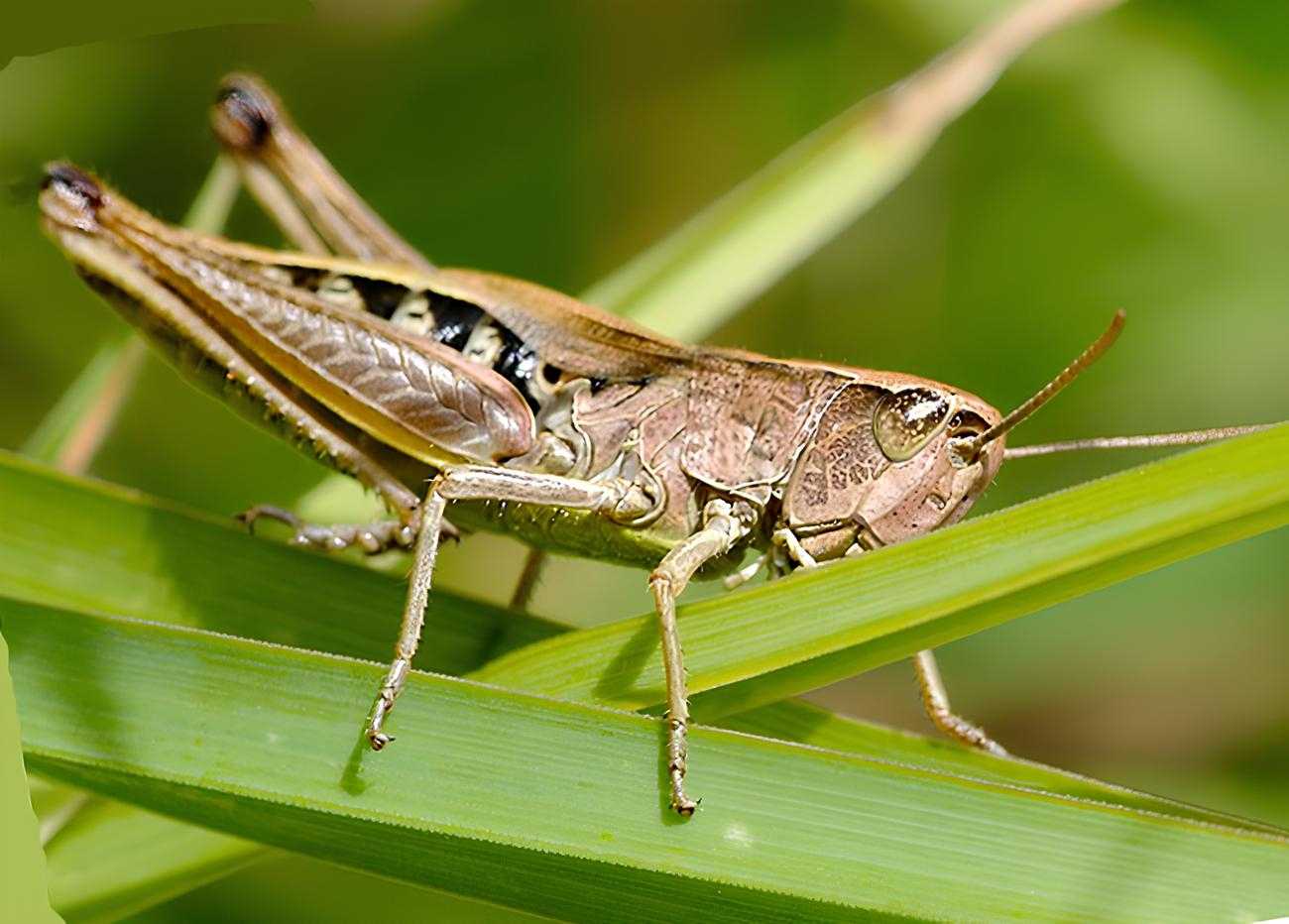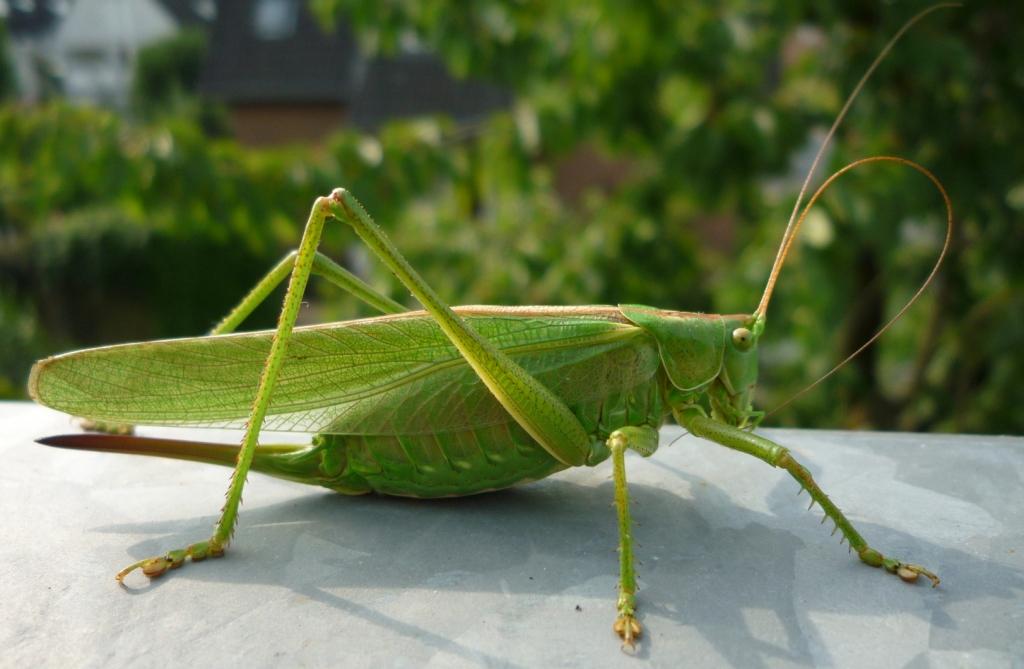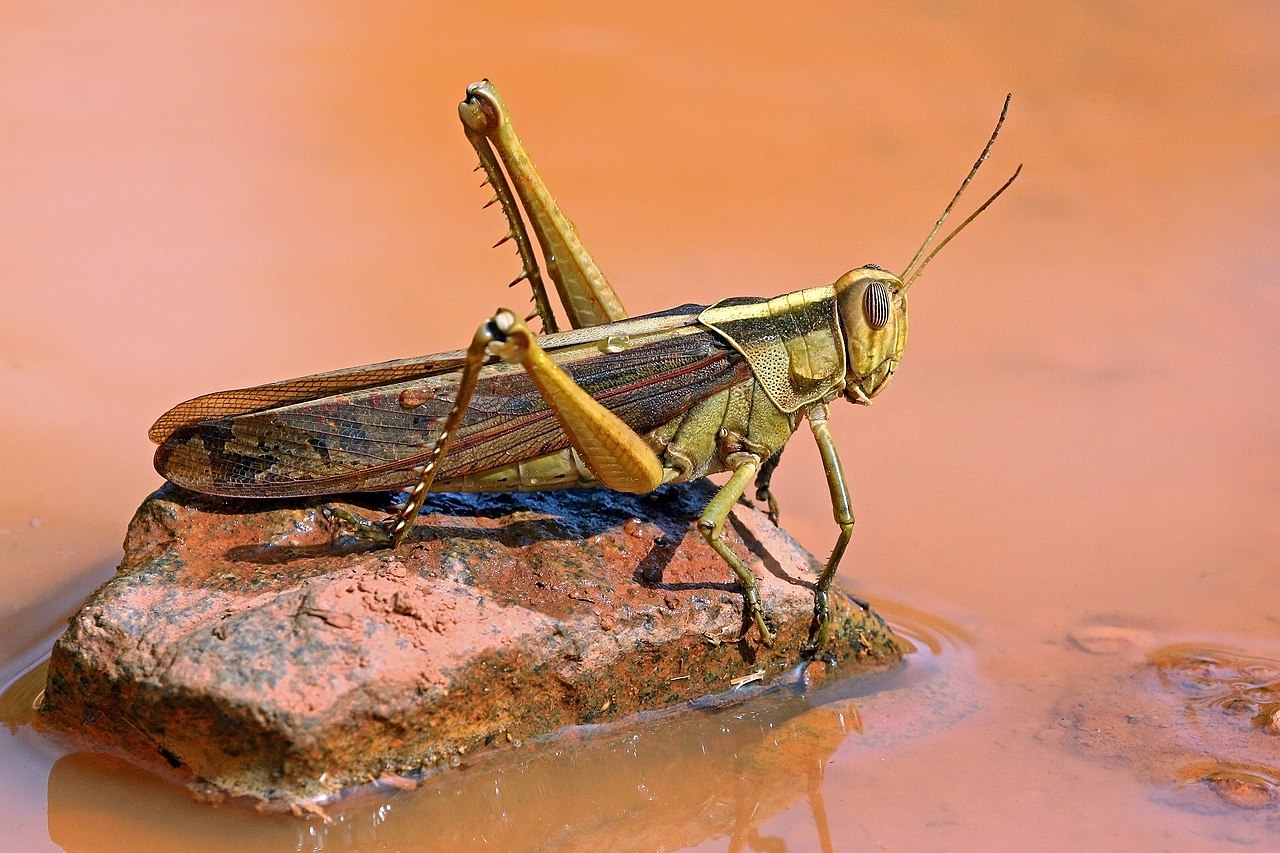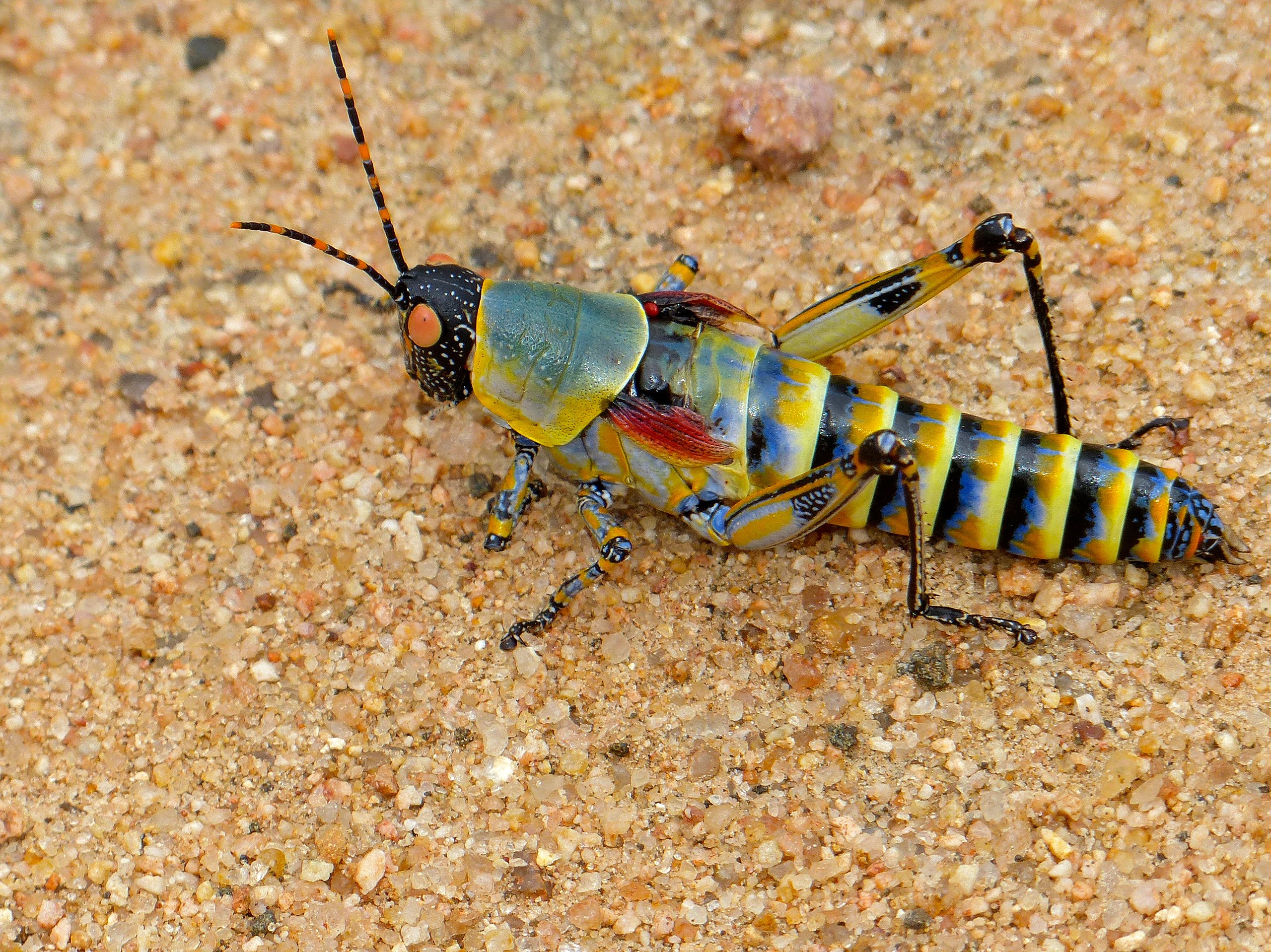Distinguishing a grasshopper from a locust or a cricket goes beyond relying solely on color. Both green grasshoppers and gray locusts exist, and vice versa. Size isn’t a reliable indicator either. In reality, there are numerous species of grasshoppers, locusts, and crickets, each displaying distinct characteristics.
It’s important to note that crickets, locusts, and even grasshoppers are melodic insects. In the case of the first two, it’s the male individuals that generate sounds through the friction of their wings. Among grasshoppers, females also participate in singing, producing sounds by rubbing their legs against their wings.
Exclusively herbivorous, grasshoppers solely consume plants. In contrast, locusts demonstrate omnivorous or carnivorous tendencies, while crickets exhibit omnivorous or detritivores behaviors.
Grasshoppers Have Short Antennae

The initial distinguishing visual aspect that sets grasshoppers apart from crickets and locusts pertains to their antennae. Grasshoppers fall within the suborder Caelifera under the Orthoptera order, denoting “straight wings.” Members of this suborder possess stubby and robust antennae. On the other hand, crickets and locusts belong to Ensifera, characterized by their elongated and slender antennae.
Grasshoppers
- Grasshoppers are known for their strong hind legs designed for jumping.
- They usually have short antennae.
- They are primarily herbivorous, feeding on plants and leaves.
- Grasshoppers are known for their distinctive sound produced by rubbing their hind legs against their wings.
- They go through incomplete metamorphosis, with three life stages: egg, nymph, and adult.
Differences Between Crickets and Locusts

Now, let’s differentiate between crickets and locusts. Begin with color, if possible, as there are no green-bodied crickets. The hind legs of crickets extend widely from their bodies. Additionally, crickets feature two distinct cerci—visible tips—at the rear of their abdomen.
Crickets
- Crickets have long antennae compared to grasshoppers.
- They are known for their distinctive chirping sound produced by rubbing their wings together.
- Crickets are omnivorous, consuming both plants and other insects.
- They have a more flattened body compared to grasshoppers.
- Crickets undergo complete metamorphosis, with four life stages: egg, nymph, pupa, and adult.

Regarding wings, crickets position theirs flat on their backs, while locusts’ wings are situated on the sides of their bodies. Lastly, crickets tend to avoid direct sunlight; some even exhibit nocturnal behavior. Although they are capable of leaping, they generally prefer concealing themselves in burrows.
Locusts
- Locusts are a type of short-horned grasshopper that can undergo significant changes in behavior and appearance in response to environmental conditions.
- When conditions are right, locusts can form swarms and become highly destructive pests to crops.
- They have the ability to change color and form swarming behaviors under certain circumstances.
- Like grasshoppers, locusts also go through incomplete metamorphosis.
References
- Featured Image: Flickr / Bernard Dupont.
